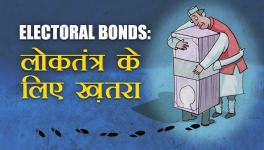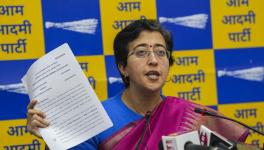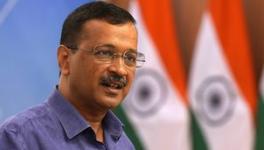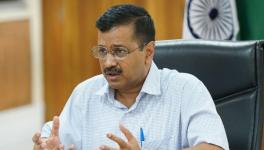Electricity Privatisation in Delhi: Its Repercussions
The decision of Arvind Kejriwal's government in Delhi to have the accounts of the three distribution companies (discoms) subjected to a CAG audit has had immediate repercussions. The three discoms are moving the courts against a CAG audit and the two Reliance Anil Ambani Group distcoms – BRPL and BYPL – have also threatened long power cuts as they claim they have no money to pay NTPC its outstanding dues. The matter has escalated with the Delhi government asking DERC, the Delhi Electricity Regulator to revoke their licenses under section 19 (d) of the Electricity Act, 2003.
For Kejriwal, all issues are only of corruption. The larger issue of the privatisation of the electricity sector – the so-called reforms that resulted in the dismantling of the State Electricity Boards and creation of the electricity regulators who now handle all tariff issues -- hardly figure in his scheme of things. And yet, without addressing these key issues, Kejriwal is likely to find himself enmeshed in a whole bunch of procedural and legal issues and fail to deliver any relief to the people of Delhi. His bluff of calling in another power company to take over the two distcoms being run by the Anil Ambani Group is just that – bluff. He would have been better served by holding out the more realistic threat of taking over the management of the two distcoms, which would be well within Delhi government's legal powers. This is what the West Bengal government did when the Calcutta Tram Company had decided to buck the government and had raised the price of tickets unilaterally.
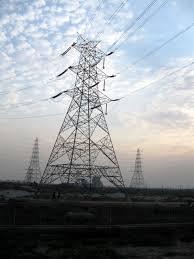
Image Courtesy: wikipedia.org
Let us look at the larger picture of Delhi Electricity reforms. In 1992-93, the Delhi Vidyut Board (DVB) had annual losses of Rs. 250 crore and transmission and distribution losses of about 25%. After a decision was taken to privatise DVB, the first steps of the Delhi government was to run DVB down to the ground, so that the people of Delhi would readily agree to its privatisation. The annual losses increased to Rs. 700 crore ( the interest on loans was a major element of this amount) and the transmission and distribution losses to about 50%. This set the stage for privatisation, the argument being that once the DVB was privatised, the people would pay less tariff as the more efficient private sector would save money by cutting down on the 50% of electricity that was being lost and pass the benefits to the consumer.
Let us look at the electricity scenario today. The three distcoms have combined losses of Rs. 7,190 crore (for 2013. The latest figures are even more higher) even after taking into account the initial subsidy provided by the Delhi government of Rs. 3,500 crore, and further subsidies to keep electricity rates low for the low-end consumers (0-200 units). This is in spite of a 328% increase of tariffs for domestic consumers after privatisation – Rs 1.37 per unit in 2002 to Rs 5.87 per unit in 2013. The losses in unmetered supplies and transmission and distribution losses have come down to about 15%. In other words, even after lowering of distribution losses, the losses of the private distcoms today are much higher than that of DVB losses in 1992-93. Even if we take 1997-98 as the base, then also the annual losses of the private distcoms are higher than that of DVB. If we take the subsidies provided by the erstwhile Sheila Dixit government into account, the three distcoms have annual losses exceeding Rs. 1,500 crore. In other words, privatisation's primary purpose – to make the electricity sector run on commercial lines has completely failed.
Incidentally, in the new regulatory double speak, we no longer speak of losses of distcoms but term such losses as “regulatory assets”. This makes it appear that the losses of the State Electricity Boards have miraculously disappeared and somehow been transformed into assets.
Steep increase in tariffs
Behind the steep increase in tariffs in Delhi after privatisation, is the whole regulatory system that has been built which allows gaming of the system by the private parties. The regulators ask for the licensees to submit proposals, which run into hundreds of pages, ask for comments from the public and then sit as “judges” between the various “stakeholders” and give their “judgements”. These are the tariff orders which peg the price of electricity for the consumers.
In Delhi, the distcoms have gamed the system in various ways. They have been asking for tariff revisions with unaudited statement of accounts. Further, the accounts hide a whole range of transfer pricing between the distcoms and other companies owned by the same business group. For example, a Reliance company bought electronic meters from China, marked up the price by a hefty Rs. 585 core and then “sold” it to the two Reliance distcoms in Delhi. There have been charges that when the distcoms sell power, they sell it at a loss to their trading or other distribution companies, and when they buy, they buy at a much higher rate. The regulatory system does not insist on strict separation of ownership – companies owning distcoms should not be power trading companies or power generating companies. Without this, the system can always be gamed and it is very difficult for a regulator to go into each individual transaction.
The second problem with the current procedures is the fundamentally flawed premise that all stakeholders – whether Ambanis or Tatas or a consumer drawing 100 units – all have equal resources to look after their interests. The reality is that this is a completely unequal regulatory battle between the private companies and the consumers.
What are the real losses of the distcoms? The former chairman of DERC, Brijender Singh had stated in 2010 that considering lower transmission and distribution losses, the Delhi power tariffs should actually come down and not be raised. His calculations were that the distcoms are overcharging the consumers Rs. 300 crore per month. His tariff order of 2010-2011 was held by other members in DERC and after his retirement a more pliant DERC Chairman was appointed. The complicity of the Sheila Dixit government in scuttling Brijender Singh's tariff order to help the Delhi distcoms is well-known.
There are three areas that distcoms have dressed up their books and claimed higher tariffs. One is that they are incurring capital expenditures every year – for example, new electronic meters, transformers, cables etc. They tend to give contracts to their sister companies who overcharge the distcoms and siphon off money into these sister companies. The higher capital cost generates a higher return – all capital costs are built into the tariff by a 16% rate of return on such capital investments. The second is that that Delhi distcoms have reached a large number of Power Purchase Agreements (PPA's) with a number of power generating companies, far beyond what they require. They claim that this is to shield them against high peaks that the Delhi system experiences. The surplus power is sold at well-below the purchase price to their own sister companies, again transferring money out of the company. This is worse during summer, when the spot price of electricity is high. The distcoms do a much higher amount of load shedding than they report (in 2009, DERC noted that under-reporting was to the tune of almost 50%) and sell this power at a much higher price in the spot market, again through their trading arms. The third is installing meters that run faster due to various reasons and overcharging of the consumers.
The privatisation of the DVB had come under attack earlier. The CAG Report had stated that the assets of Delhi Vidyut Board were undervalued by a whopping Rs 3,107 crores! In addition, the Delhi government paid the private companies 10 times more as subsidy – 3,500 crore – than what they brought in as equity. Further, the Delhi government committed a 16 per cent return on equity. Considering the small amount of equity brought in by the Reliance and Tatas, this may not have been a problem then. But this provides a perverse incentive to distcoms to inflate capital investments as the increase in capital costs leads to higher benefits to the owners through the 16% rate of return in the tariff calculations.
Incidentally, though the Delhi government has 49% of shares in the distcoms, they do not seem to have played any role in the management of the distcoms. The two Anil Ambani companies have also paid no dividend to Delhi government for their 49% share.
Privatisation of the Delhi power sector should have been the easiest in the country. It is a densely populated metro, and has no rural areas that need subsidies. If after 10 years of privatisation, the Dellhi power sector still remains in a mess, it shows clearly that privatisation of the power sector anywhere else is also not likely to succeed. Earlier, the privatisation of the Orissa State Electricity Board had failed dismally, with distcoms essentially running away from their companies. It does appear, we are veering towards the same situation now in Delhi.
The consumers in Delhi have been shielded from the worst excesses of the system by the Delhi government taking over a part of the so-called losses of the distcoms through high subsidies. In spite of that, they have suffered from high tariffs and power cuts during the summer peaks.
To be fair to Kejriwal, he had earlier raised the issue of corruption in DERC and the Delhi government's complicity with the distcoms. The problem is that he is unwilling to go into the root issues – the privatisation of power monopolies and restricting himself to only fudging of the books by the discoms.
Distribution is a monopoly and unless we can make the distribution companies accountable, the problem of high tariffs cannot be solved. In the final analysis, no government can waive off its responsibility of providing adequate power at reasonable rates to its people. To believe that the magic wand of the market will solve this problem is to live in a fool's paradise. Kejriwal now needs to take a hard look at what are his policies regarding the infrastructure sector. A neoliberal framework in which a less corrupt government and efficient markets will solve his problem won’t happen. Markets fail and have failed badly in the electricity sector. This is the lesson from California to Europe. This is the lesson Kejriwal needs to learn, the quicker the better.
Disclaimer: The views expressed here are the author's personal views, and do not necessarily represent the views of Newsclick
Get the latest reports & analysis with people's perspective on Protests, movements & deep analytical videos, discussions of the current affairs in your Telegram app. Subscribe to NewsClick's Telegram channel & get Real-Time updates on stories, as they get published on our website.













